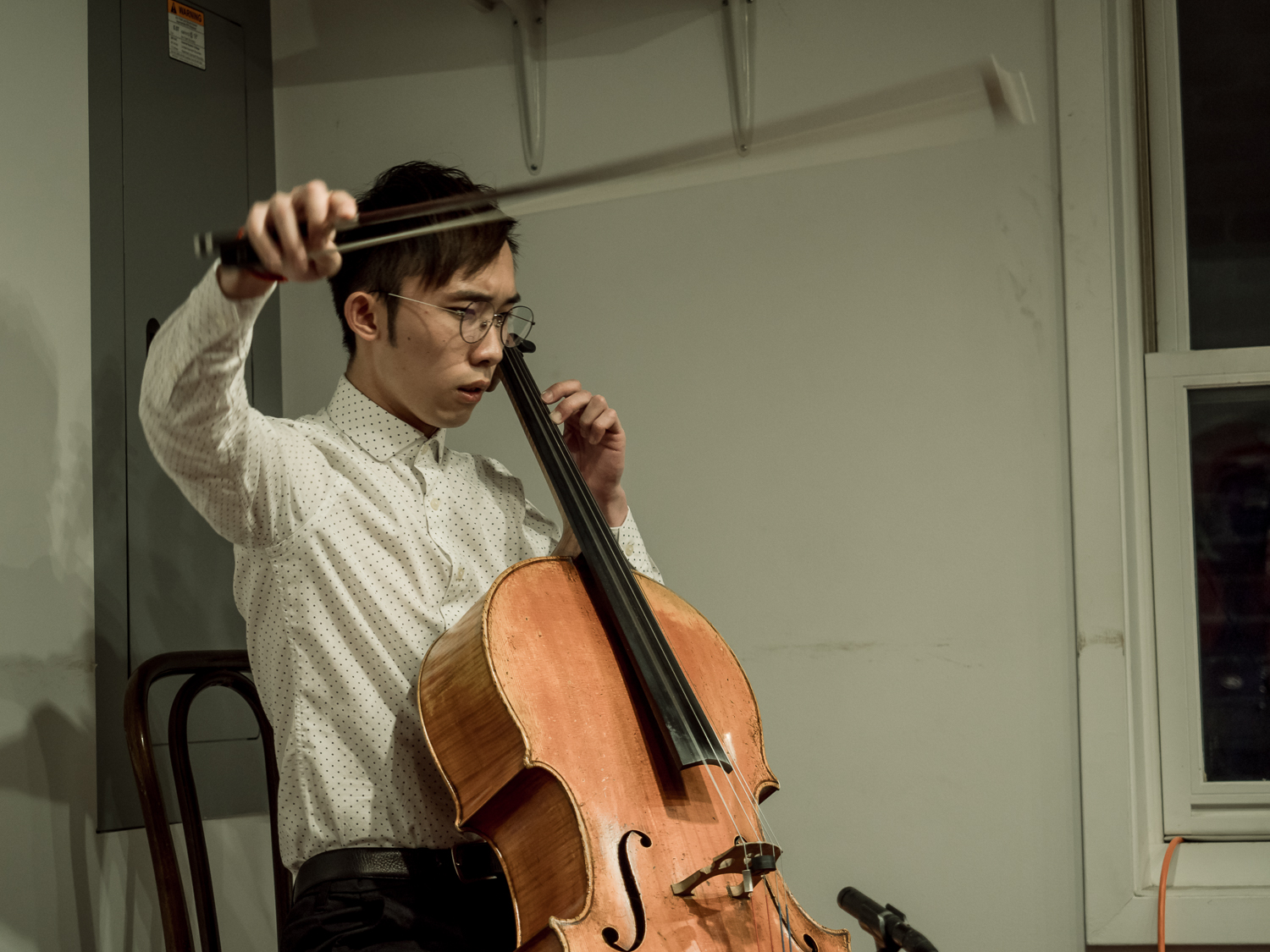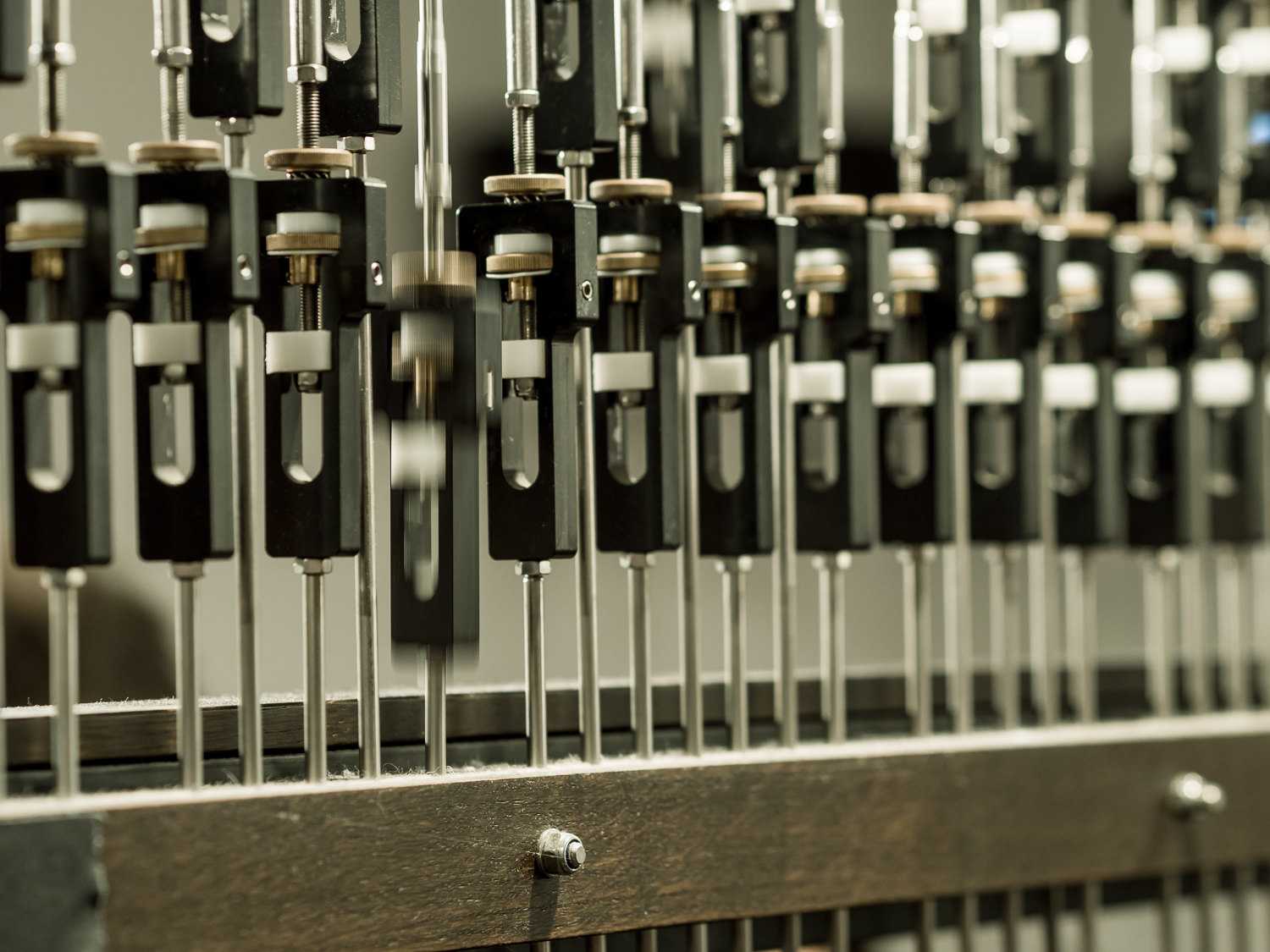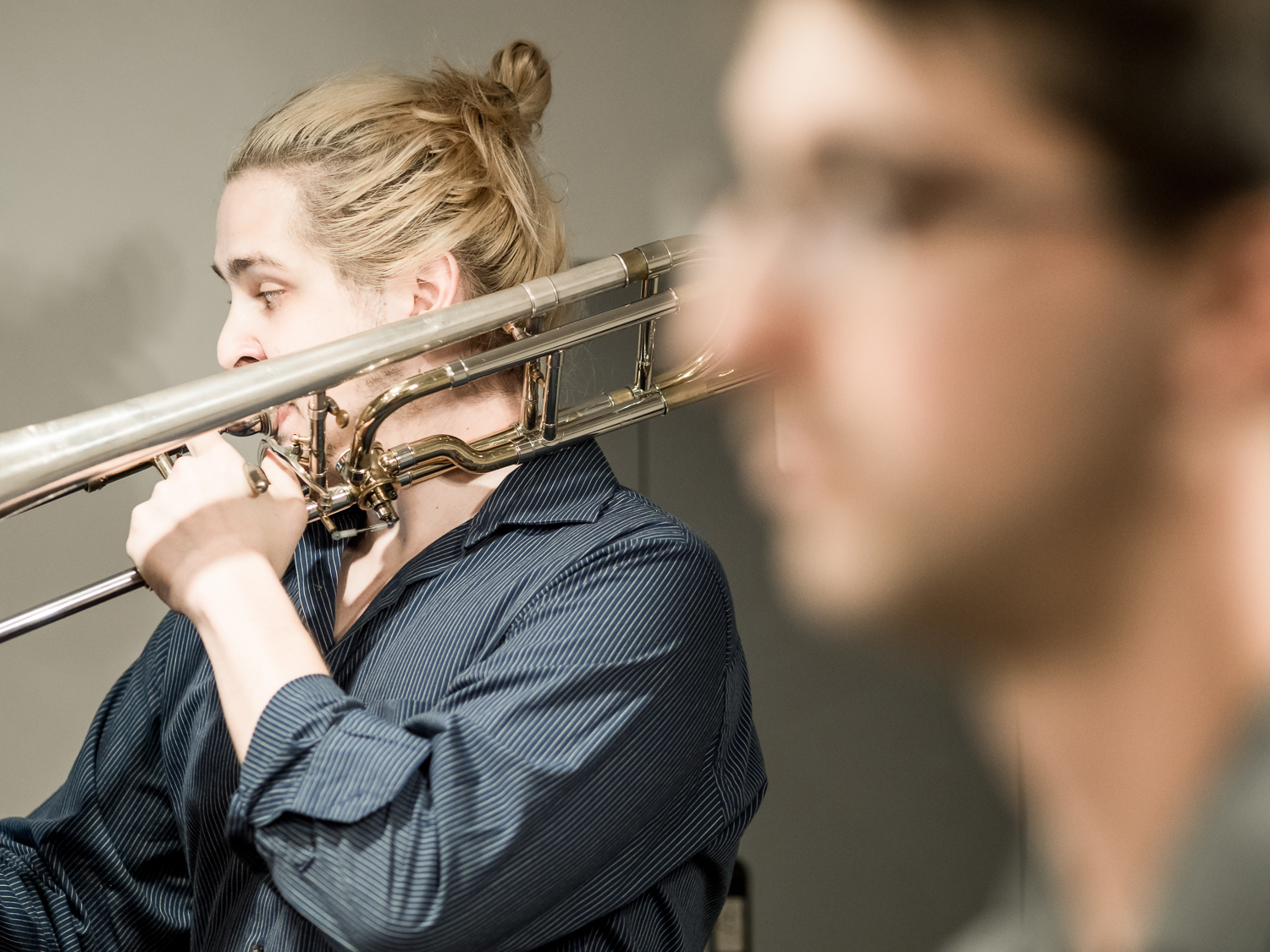The Beautiful Wild Chimes: New Music Carillon Festival at Rockefeller Chapel Makes History
Photo by Erielle Bakkum.
by Clare Austen-Smith
It’s 5:45pm on a hot spring day in Hyde Park. The majestic architecture of Rockefeller Chapel soars above a white tent nestled at its base, the tower and the tent working together to shelter festival-goers with welcome shade and camaraderie. The opening act of the festival, performed by four undergraduate members of the University of Chicago Guild of Carillonneurs, is only fifteen minutes in the past but already being recalled with wistful enthusiasm. In another quarter hour, attendees will be treated to the world premiere of new work by renowned composer Augusta Read Thomas, Professor of Composition in the Department of Music and Director of the newly founded Chicago Center for Contemporary Composition. Thomas’ piece will be followed in turn by a closing recital led by University Carillonneur, Joey Brink. It is only the first day of the two-day festival, but the excitement in the air is palpable.
The Rockefeller’s carillon is the single largest instrument ever built. Composed of seventy-two bells and 100 tons of bronze, special steel beams in the otherwise completely stone chapel are required to hold the instrument’s weight. Although the Rockefeller’s carillon is just shy of ninety- years-old, the history of carillon stretches back more than five centuries. Carillons are extraordinary, distinguished, and historic instruments—and so is much of the music played on them worldwide. Which is what made Rockefeller’s New Music Carillon Festival so remarkable: here, for the very first time in the history of Rockefeller’s carillon, was a showcase of contemporary works for this venerable instrument.
From May 25-26, 2018, the first Rockefeller Carillon New Music Festival brought together an exceptional group of artists—celebrated and emerging composers, the world’s best carillon performers, and talented University students. The Rockefeller’s seventy-two carillon bells rang with new music throughout the two-day festival, featuring forty-one new works for the instrument, of which sixteen were world premieres. Every piece of carillon music played at the weekend festival was “written in the twenty-first century, some 95% of it within the past five years, representing an extraordinary outpouring of new music for the bells,” says Elizabeth Davenport, Dean of Rockefeller Chapel. The festival, convened by Dean Davenport in her tenth year at the University of Chicago, attracted hundreds of attendees throughout the weekend.
“For the past ten years, we’ve commissioned composers every year to write new choral music and music for organ— composers from diverse traditions and from different parts of the world,” Davenport says. In light of an exhilarating first year for the Chicago Center for Contemporary Composition (CCCC), and with the energetic involvement of both Thomas and Brink, a carillon festival made perfect sense. “I had wanted to add carillon music to this legacy, and the time was simply right.”
Since the beginning of the Renaissance, specifically in Belgium and the Netherlands, medieval bellringers began using melodies, made possible with the addition of a manual batton keyboard, to communicate with townspeople. The keyboard controlled the robust system of bells, like an organ.
A townsperson in the sixteenth century might not recognize the carillon of today. “I think they’d be pretty scared, hearing the music,” says Brink. In the early twentieth century, as technical keyboard innovations began to allow for the expression of touch, the carillon developed as a concert instrument. Brink describes his role as a carillonneur as “everything related to the bells and the tower.” The sixth carillonneur in the history of the chapel, he oversees a student guild of carillonneurs, leads tours, and curates carillon programming, as well as playing everything from weddings on the weekends to daily song requests.
Inside the Rockefeller, photos courtesy of Rockefeller Chapel.
If you’ve heard “Life on Mars” by David Bowie echoing throughout the campus, you’ve got Brink to thank for that. While contemporary music has been played on the carillon before, the Rockefeller Carillon New Music Festival represented a stunning increase in new music produced specifically for the carillon. This included pieces that were “electroacoustic,” meaning a carillonneur played in accompaniment with an electronic track. Brink explained that preparing to present this sort of collaboration entailed a significant amount of heavy lifting—literally. Movers were hired to bring up speakers that were over 5 feet tall—“Like ones you’d see at a rock concert,” he explains—to the top of the 207-foot-tall, 271-step tower. Adding the electronic element offers an exciting challenge to the carillonneur playing the piece, as well.
“Carillonneurs are not used to playing with other instruments or sounds . . . it’s a different experience to play with an electronic track that is keeping you on a beat,” Brink says; it’s one that is worth the result. “When the sounds coming out of the tower are ones that listeners don’t expect, it’s a whole different experience for them.”
In addition to several electroacoustic pieces, multiple instruments—like a trombone—were played alongside the carillon for the first time in its history.
The Rockefeller has commissioned new works since the carillon’s installation in 1932, but it typically premieres “a couple of major works per decade, generally written by well-established composers,” says Davenport. Every one of the first-year composition graduate students in the music department wrote for this festival, notes Brink. “Getting to work with these composition students and introduce them to the carillon and . . . work on it with them, revising things, changing things, making things more adaptable to the actual instrument—that was really fun for me.”
Music from a carillon, at least to an outsider, can feel remote or imposing, due to the scale of the instrument, and, in this case, the modern Gothic architecture of Rockefeller Chapel itself. “The sound of the bells is deeply personal, yet the person playing them . . . is 230 steps up the tower,” Davenport says. One of the goals of the festival was to “reach folks who have no idea what the carillon is, but who are generally curious about new music,” adds Eden Sabala, Special Events Manager for the Rockefeller.
A major highlight was the world premiere of Thomas’s “Ripple Effects for Carillon.” Dedicated to Davenport in celebration of her ten years as dean, the program booklet asked listeners to remain silent until the last chord was no longer audible. It was important that the piece’s musical “ripple effects” were heard as Thomas sought to capture “the potency and influence of Elizabeth’s magnificent life-force, efforts, leadership, and positive energy” in one piece. The novel sound of Thomas’s piece was reflected in its form, which required that all seventy-two bells be rung simultaneously. “When I heard that she was including a final cluster chord in which all seventy-two bells would be sounded at the same time—the first time this had ever been done—it was both a fantastic surprise and also not a surprise! Like audiences around the world who have been treated to Thomas’s work, I’ve come to expect the unexpected from her,” Davenport exclaims.
Not only did several pieces that debuted at the festival make use of unusual formal procedures or rely upon exciting collaborations; they also came from intensely personal places that one would typically think of in the context of a singer-songwriter like Bob Dylan or Kurt Vile. Davenport notes that Brink “and other composers are now exploring what it means to write music that is personal to them, or that speaks to issues of the day.” For example, Brink’s “PPROM” was inspired by a nine-day hospital stay occasioned by his partner’s “preterm premature rupture of the membranes” (PPROM) at thirty-two weeks of pregnancy. The piece is split into two movements, highlighting the “terror, boredom, and excitement” they felt in the hospital, as well as the gift of being able to spend so much time together before their child was born. (Everything turned out okay.)
Global affairs and politics were also the subjects of new work commissioned for the festival. “Ashti” by Jung Sun Kang was written in response to President Trump’s recent travel ban and was based on a collaboration with Afghan refugee, artist, and college student Ferdous Dehqan. “Counterfactuals” by Christopher Burns stemmed from the composer’s sense that, in 2018, “falsehoods are a prominent part of our political discourse, often disseminated via data-driven digital advertising and social media.” Pamela Ruiter-Feenstra highlighted the universal voice of women participating in the #MeToo movement in her piece, “Our- Time: Me Too.” To drive her message home, she encoded the phrase “me too” into a musical alphabet, known as a musical cryptogram. “As this composition unfolds,” wrote Ruiter- Feenstra, “the letters coded from ‘Me Too’ form a haunting musical alliance as a mantra that recurs in accents from every continent.”
The exploration of these contemporary themes for such a historic and imposing instrument underscores the appeal of a festival that showcases the boundless opportunity for future compositions. “When people hear the idea of a new music festival for a carillon, sometimes the reaction is ‘wait, what is a carillon?’” Sabala says. “But when they hear the carillon in a different way, it opens up their ears—literally—to things that they didn’t know existed.”





